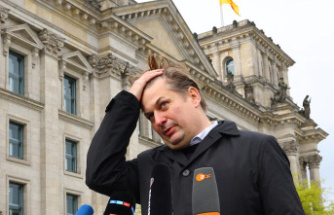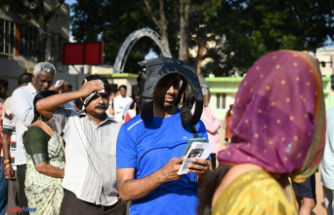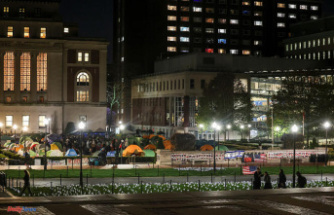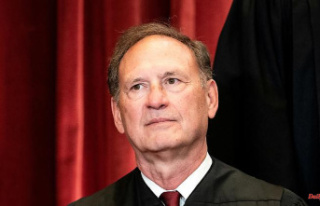There are crimes so heinous and horrific that some wish these people would never be released from prison. Anyone who commits such crimes is usually sentenced to a long term of imprisonment, to be served in a closed prison. On the other hand, never being free again without the possibility of improvement is incompatible with the principles of the constitution.
The Federal Constitutional Court points out that criminals must have a chance to be free again even after the most serious acts of violence and after serving their sentence. It is the job of the penal system to rehabilitate the convicted offenders and – as far as possible – to prepare them for release. At the same time, enforcement has the aim and task of protecting society. The preventive detention is an additional instrument to be able to do justice to the protection of society and the task of rehabilitation.
If courts are of the opinion that serious criminal offenses could recur, they can also order preventive detention in the judgment. The preventive detention is then carried out after the prison sentence. It's not a punishment. It is not about guilt here, but solely about dangerousness and appropriate prevention.
There is no fixed end. However, it must be checked regularly whether further enforcement is still necessary or whether enforcement can be suspended on probation or whether the measure can be declared settled.
During implementation, criminal detention and preventive detention must be clearly separated. This is important for understanding why preventive detainees have more freedom, although by definition they are dangerous. A "special sacrifice" is imposed on them in the security interest of the general public. They have served their prison sentences and paid for the injustice they caused, but they remain in prison as a precautionary measure because they are still dangerous. For this reason, inmates have more leisure activities, more treatment options such as external therapy and more space than prisoners.
The practice of preventive detention was upheld as appropriate and lawful by the European Court of Human Rights in December 2018. This legal certainty is important because legal disputes often arise between detainees and the responsible institutions in the area of preventive detention. It is always about possible loosening.
The detainees should learn in a more open environment to take responsibility for their lives and their actions - not only, but especially for their crimes. This learning of responsibility begins with everyday situations in dealing with fellow detainees and the employees, for example when it comes to agreeing on the use of the common oven in the prison. That may sound banal. But these are often the first important steps.
Even if those in preventive detention have often spent more time in prison than in freedom: preventive detention is intended to prepare them for a responsible life in freedom without crime. Some of their terrible deeds date back decades. Many detainees do not want to be reminded of this. But these memories should stay awake so that they never commit such terrible deeds again.
That's challenging. For the detainees who get along with each other in a limited space and have to comply with strict rules. Addiction is often an issue that prisons have to deal with. However, preventive detention is also a challenge for the employees, who have to set boundaries and manage conflicts on a daily basis. I have the greatest respect for this work. The officials work to prepare these people for freedom. There can always come a point when a court orders dismissal.
And the danger? The task of the staff is to get the most out of a closed environment so that behavior patterns can change sustainably not only during the accommodation but also in freedom. The detainees can also be granted relaxation gradually and after intensive examination. They should test themselves in freedom, because at some point they will be free again - and then better prepared than unprepared. Under this premise, there is no reasonable alternative to relaxation.
The detainees have to adhere to strict conditions, such as the strict ban on alcohol. But - and this is part of the truth: sometimes following the rules doesn't work. Failure cannot be ruled out and is part of it to a certain extent. For example, when an inmate does not return to the facility at the agreed time. However, due to the legal requirements, the institution remains obliged to prepare for a later possible release in the form of such exits.
You then read about these cases in which it didn't work out in the media. Unfortunately, the vast majority of cases in which people in preventive detention are successfully re-integrated at great expense are not publicly acknowledged. Many detainees keep to agreements and agreements.
Even after the end of preventive detention, these people are not left alone, but supported and accompanied during the transition. For example, you can get help looking for a place to live and a job. At some point, however, there comes a point when these people, who are used to the processes in the institution, have to manage on their own.
Anyone who is released has a good prognosis and, according to the court, is no longer so dangerous that the massive restrictions on personal freedom associated with preventive detention would still be proportionate after the sentence has already been fully served. There is a reasonable assumption that these people have learned from their serious mistakes. Social contacts, integration into the job and housing market and rehabilitation treatment in prison are essential factors in enabling those released to return to society.
In order for this to succeed, it is also important for society to understand what the tasks of preventive detention are and what can actually be achieved with this instrument.
The author has been Senator for Justice of the Hanseatic City of Hamburg since June 2020. From 2015 to 2021, the 39-year-old was state chairwoman of the Greens in Hamburg.












